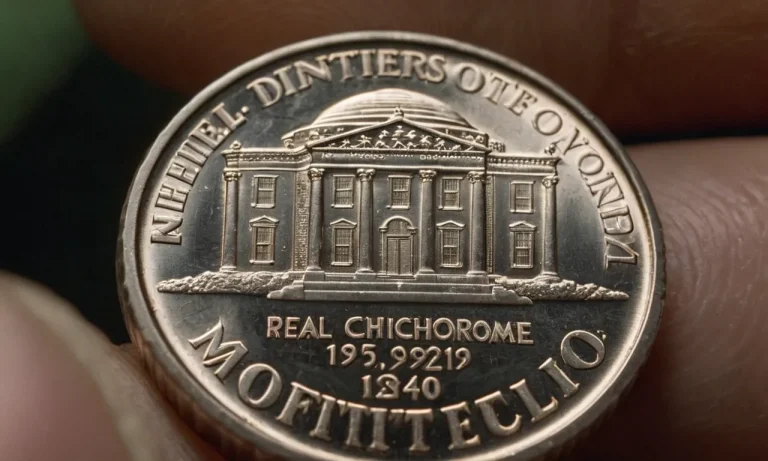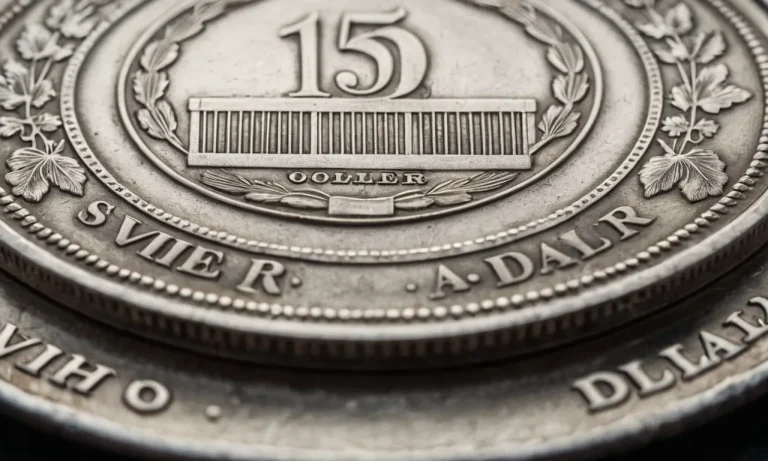In today’s world of counterfeit money and scam artists, it’s important to know how to check old 100-dollar bill authenticity before accepting it as payment or depositing it into your bank account. An authentic century note can be worth a lot to a collector, but a fake one is worthless.
Fortunately, with a few simple tests, you can easily verify if your Benjamin Franklin C-note is a legitimate currency or just a worthless fake.
Examine the Portrait and Federal Reserves Seal
When checking the authenticity of an old 100-dollar bill, it is important to carefully examine the portrait of Benjamin Franklin and the Federal Reserve seal. These two elements can provide valuable clues about the bill’s legitimacy. Here are some key features to look out for:
Look for key features in Franklin’s face
Start by examining the portrait of Benjamin Franklin, which is located on the front of the bill. A genuine 100-dollar bill will have a high level of detail in Franklin’s face. Look for clear, sharp lines and fine details such as wrinkles, shading, and texture.
Counterfeit bills often have blurry or smudged features, indicating a lower-quality printing process. Additionally, Franklin’s face should have a lifelike appearance, with a three-dimensional quality. If the portrait appears flat or lacks depth, it could be a sign of a counterfeit bill.
Check for microprinting around the portrait
Microprinting is a security feature found on authentic 100-dollar bills. It involves printing extremely small text that is difficult to replicate. Take a close look at the area around Franklin’s portrait using a magnifying glass.
You should be able to see tiny, crisp lines of text that spell out “The United States of America” on the collar of Franklin’s jacket. Counterfeit bills may have blurry or illegible micro printing, so be sure to check this feature carefully.
Inspect the unique Federal Reserve seal
The Federal Reserve seal is another important element to examine when determining the authenticity of an old 100-dollar bill. On a genuine bill, the seal should be clear, distinct, and well-defined. It should also have sharp lines and fine details.
Pay attention to the eagle’s feathers, the stars, and the text surrounding the seal. Counterfeit bills may have a seal that appears smudged, fuzzy or lacks the intricate details found on genuine bills.
Remember, these are just a few key features to check when examining an old 100-dollar bill. For a more comprehensive guide, you can visit the U.S. Currency Education Program website, which provides detailed information and visual examples of genuine bills.
By familiarizing yourself with these security features, you can better protect yourself from counterfeit currency and ensure that your 100-dollar bill is real.
Feel the Texture and Note the Color Shifting Ink
Genuine bills have a uniquely textured feel
One of the first things to check when determining the authenticity of an old 100-dollar bill is the texture. Genuine bills have a distinct, textured feel that is difficult to replicate. When you run your fingers over the surface of the bill, you should be able to feel the raised ink of the printing.
This texture is a result of the intaglio printing process used by the Bureau of Engraving and Printing to produce genuine currency. Counterfeit bills often lack this unique texture, feeling smoother or flatter to the touch.
Tilt the bill to see the color shifting ink
Another important feature to look for is the color-shifting ink. Genuine 100-dollar bills are designed with ink that changes color when tilted. This is a security feature that makes it harder for counterfeiters to replicate.
When you tilt the bill, you should see the color of the ink shift from green to black or copper. Counterfeit bills may not have this color-shifting effect or may have ink that changes color differently.
Tilt the bill under different lighting conditions to ensure the color shifting is consistent and matches the genuine characteristics.
It’s important to note that while these two features are strong indicators of the authenticity of an old 100-dollar bill, they should not be the sole basis for determining its legitimacy. Counterfeiters are becoming increasingly sophisticated in replicating these security features.
Therefore, it is recommended to use multiple methods, including checking for other security features such as watermarks, security threads, and microprinting.
If you are still unsure about the authenticity of an old 100-dollar bill, it is best to consult with a professional, such as a bank teller or a currency expert. They have the knowledge and expertise to accurately determine whether the bill is genuine or counterfeit.
Hold Up To Light to View Security Thread
If you have an old 100-dollar bill and want to check if it is real, one of the first things you should do is hold it up to the light. All genuine 100-dollar bills have a security thread embedded within the paper, which can be seen when held up to a light source.
This security thread is an important feature that helps determine the authenticity of the bill.
All real $100’s have a security thread
It’s important to note that this security thread is not visible under normal light conditions. To check for it, simply hold the bill up to a bright light source, such as a lamp or overhead light. The security thread should become visible as a thin strip running vertically across the bill.
The thread will display text and images
Upon closer inspection, you will notice that the security thread on a genuine 100-dollar bill displays text and images. The text typically includes the denomination of the bill, such as “USA 100” or “One Hundred Dollars,” while the images may feature patriotic symbols, such as the American flag or the bald eagle.
This combination of text and images is a unique characteristic of a genuine 100-dollar bill.
It’s worth mentioning that counterfeiters may try to replicate the security thread, but they often fall short in terms of quality and accuracy. For example, a fake security thread may be poorly aligned, have blurry text or images, or may even be missing altogether.
Therefore, it is crucial to pay attention to these details when examining an old 100-dollar bill.
Use a Counterfeit Detector Pen on the Bill
One of the most common and easiest ways to check the authenticity of an old 100-dollar bill is by using a counterfeit detector pen. These pens are designed to react to the paper’s starch content, which is present in genuine currency.
When you mark a bill with a genuine pen, it should leave a light or colorless mark, indicating that it is likely real.
Special pens react to the paper’s starch content
Counterfeit detector pens work by detecting the presence of starch in the paper. Genuine currency is printed on paper that contains starch, while counterfeit bills are often printed on different types of paper that lack this component.
When the pen is used on genuine currency, it will leave a light or colorless mark because the starch in the paper reacts with the chemicals in the pen. On the other hand, if the bill is counterfeit, the mark will turn dark or black, indicating that it is likely fake.
Fake bills won’t turn the correct color
One important thing to note is that counterfeit detector pens are not foolproof. Some counterfeiters have found ways to replicate the starch content in genuine bills, making it more difficult for the pen to detect fakes.
Additionally, the pen can only determine the presence of starch and not other security features on the bill. Therefore, it is still essential to use other methods, such as examining the bill’s security features and comparing it to a genuine bill, to ensure its authenticity.
When using a counterfeit detector pen, it is crucial to follow the instructions properly and use it on different areas of the bill, including the watermark, security thread, and portrait. By doing so, you can increase the chances of accurately determining whether an old 100-dollar bill is real or counterfeit.
If you want to learn more about counterfeit detection and other ways to authenticate old currency, you can visit websites like uscurrency.gov or federalreserve.gov. These websites provide valuable information and resources for identifying genuine U.S. currency.
Examine the Serial Numbers and Federal Reserve Indicators
When checking the authenticity of an old 100-dollar bill, one of the first things to examine is the serial numbers. The serial numbers on a genuine bill will all be in the same font and spacing. Counterfeit bills often have variations in font size or spacing, which can be a red flag.
Take a close look at the numbers and ensure they are consistent throughout the bill.
Serial numbers should all be the same font and spacing
The serial numbers on a genuine 100-dollar bill should all be printed in the same font and have consistent spacing. This is because genuine bills are produced using high-quality printing techniques. Counterfeit bills, on the other hand, are often produced using lower-quality methods, resulting in variations in font size or spacing.
If you notice any inconsistencies in the serial numbers, likely, that the bill is not genuine.
Editor’s note: You can compare the serial numbers on the bill you have with genuine examples available on the Federal Reserve’s website. This can help you identify any discrepancies and determine the authenticity of the bill.
The two Federal Reserve indicators should match
Another important aspect to consider when checking the authenticity of an old 100-dollar bill is the Federal Reserve indicators. These indicators are found on the front of the bill and should match. One indicator is the Federal Reserve seal, which is located to the left of the portrait.
The other indicator is the Federal Reserve District seal, which is located to the right of the portrait. Both of these indicators should be present and should match the information printed on the bill.
Editor’s note: Did you know that the design of the Federal Reserve District seal changes depending on the region? Each of the twelve Federal Reserve Banks has its unique design, making it an interesting detail to look out for when examining old bills.
If you suspect that a 100-dollar bill is counterfeit, it is important to take appropriate measures. Contacting your local authorities or the Secret Service is recommended, as they can guide how to proceed.
How To Check Old 100-Dollar Bill Authenticity – Conclusion
While technology has made counterfeiting more sophisticated, the average fake hundred-dollar bill can still be spotted through careful inspection. By looking for the key security features found on real US currency, such as the portrait watermark, color-shifting ink, and security thread, you can quickly determine if your old 100-dollar bill is real or counterfeit.
With some simple tests, you can avoid the loss and hassle of accepting a bogus Benjamin. Now you know to confidently evaluate those old C-notes that come your way!






